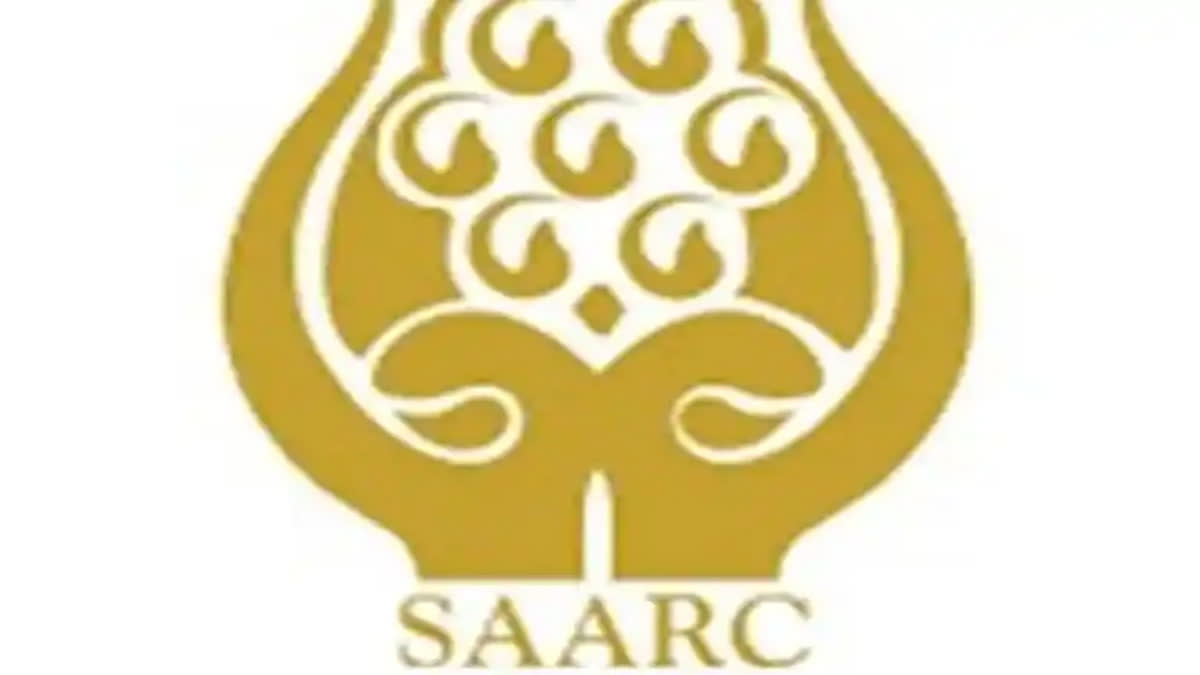New Delhi: Even as Nepal’s Lower House of Parliament approved the charter of the Bay of Bengal Initiative for Multi-Sectoral Technical and Economic Cooperation (BIMSTEC), the country’s Foreign Minister has asserted that this regional grouping cannot actually replace the South Asian Association for Regional Cooperation (SAARC) in the region.
After lengthy deliberations, the House of Representatives of the Federal Parliament of Nepal on Tuesday approved the charter of the BIMSTEC that was adopted during the virtual summit of the group hosted by Sri Lanka in 2022. But, despite this, Deputy Prime Minister and Foreign Minister Narayan Kaji Shrestha said that Nepal would not accept BIMSTEC as a replacement for SAARC as a regional organisation. He said that Nepal, as the chair of SAARC, will work to reinvigorate the organisation.
This comes in the face of India giving more priority to BIMSTEC than SAARC in recent years. Nepal is a member of both the groupings. “We do not agree on activating the BIMSTEC at the cost of SAARC becoming passive and ineffective,” the Kathmandu Post quoted Shrestha as saying during the course of the discussion. “We do not see BIMSTEC as a replacement for SAARC. In order to reinvigorate the stalled SAARC process, Nepal, as its current chair, will surely take the initiative.”
The SAARC functions as a regional intergovernmental organisation and geopolitical union in South Asia, encompassing member states such as Afghanistan, Bangladesh, Bhutan, India, Maldives, Nepal, Pakistan, and Sri Lanka. As of 2021, SAARC collectively represents 3 per cent of the world’s land area, 21 per cent of the global population, and contributes 5.21 per cent (equivalent to $4.47 trillion) to the global economy. Established on December 8, 1985, in Dhaka, SAARC operates from its secretariat located in Kathmandu, Nepal, with a primary focus on fostering economic development and promoting regional integration.
In pursuit of these goals, SAARC initiated the South Asian Free Trade Area in 2006 and maintains ongoing diplomatic relations with the United Nations as an observer. Additionally, it has forged connections with various multilateral entities, including the European Union. However, due to continuing geopolitical tensions between India and Pakistan and the evolving situation in Afghanistan, the organisation has virtually remained defunct for nearly eight years now. Presently, India engages with its eastern neighbours through BIMSTEC as an alternative avenue for cooperation.
The SAARC has been virtually rendered ineffective as a bloc, largely due to non-cooperation on the part of Pakistan on issues like connectivity and counter-terrorism. After the cross-border terror attack from Pakistani soil on an army base at Uri in Jammu and Kashmir in September 2016, that year’s SAARC Summit scheduled to be held in Islamabad stood cancelled after other members of the group joined India in boycotting it. After that, no SAARC summit has been held till date.
Meanwhile, with SAARC being defunct over the years, India has been giving more importance to BIMSTEC in terms of regional cooperation. The BIMSTEC, which came into existence in 1997, comprises seven countries lying in the littoral and adjacent areas of the Bay of Bengal - Bangladesh, Bhutan, India, Myanmar, Nepal, Sri Lanka and Thailand. The bloc brings together 1.73 billion people and has a combined GDP of $5.2 trillion as of 2023.
Membership in the bloc allows India to engage more with the extended neighbourhood in Southeast Asia under New Delhi’s Neighbourhood First Policy via northeastern India. India’s membership of BIMSTEC also complements its increasing engagements with the Association of Southeast Asian Nations (ASEAN) regional bloc under New Delhi’s Act East Policy.
According to the BIMSTEC charter that the Nepal parliament’s lower house approved, the leaders of the member countries have agreed to divide the working of the grouping into seven segments, with India providing leadership to the security pillar. This includes counter-terrorism and transnational crime, disaster management, and energy.
The charter articulates the guiding principles that govern BIMSTEC activities, such as respect for sovereignty, territorial integrity, and non-interference in the internal affairs of member states. It emphasises the principles of equality, mutual benefit, peaceful coexistence, and cooperation based on shared interests and aspirations.
According to the charter, Nepal will be providing leadership for people-to-people contact, culture, tourism, think tanks and media. This is why the question arises as to why the Nepal foreign minister has raked up the issue of reactivating SAARC. Shrestha is part of a new Left coalition government that came to power in the Himalayan nation just around a month back. Also, his comments about reviving SAARC came a couple of days after he returned from a nine-day-long trip to China. China and Pakistan regard each other as “all-weather” friends.
Hence, it raises some questions. Why is Nepal interested in reinvigorating SAARC at the cost of BIMSTEC? And can Kathmandu, as the chair of the regional grouping, do it? Harsh V Pant, Professor of International Relations with King’s India Institute at King’s College London and Vice-President (Studies and Foreign Policy) at the Observer Research Foundation think tank, wondered how this would be possible.
“What did SAARC achieve when it was effectively functioning?” Pant questioned while speaking to ETV Bharat. “Unless India-Pakistan relations normalise, how do you go about it?”
It is worth mentioning here that, after a new government took charge in Islamabad following elections in Pakistan in February this year, Foreign Minister Mohammed Ishaq Dar said that his country would “seriously examine” resuming trade with India. Trade between India and Pakistan was suspended in August 2019 after New Delhi abrogated Article 370 which gave special status to the then state of Jammu and Kashmir.
Pakistan’s new Defence Minister Khawaja Asif also expressed the hope that India-Pakistan relations would improve after the upcoming Lok Sabha elections in South Asia’s largest nation. But Pant has his doubts about the revival of the SAARC mechanism even after the elections.
“Unless Pakistan changes its attitude, it will be difficult to revive SAARC,” he said. “BIMSTEC doesn’t cover the western region of South Asia.”Pant explained that the reason why BIMSTEC became important for India was because SAARC was not paying any dividends. “Nepal has to put pressure on Pakistan if SAARC has to be revived,” he said. “But it is difficult to see how Kathmandu can make Islamabad change course.”



